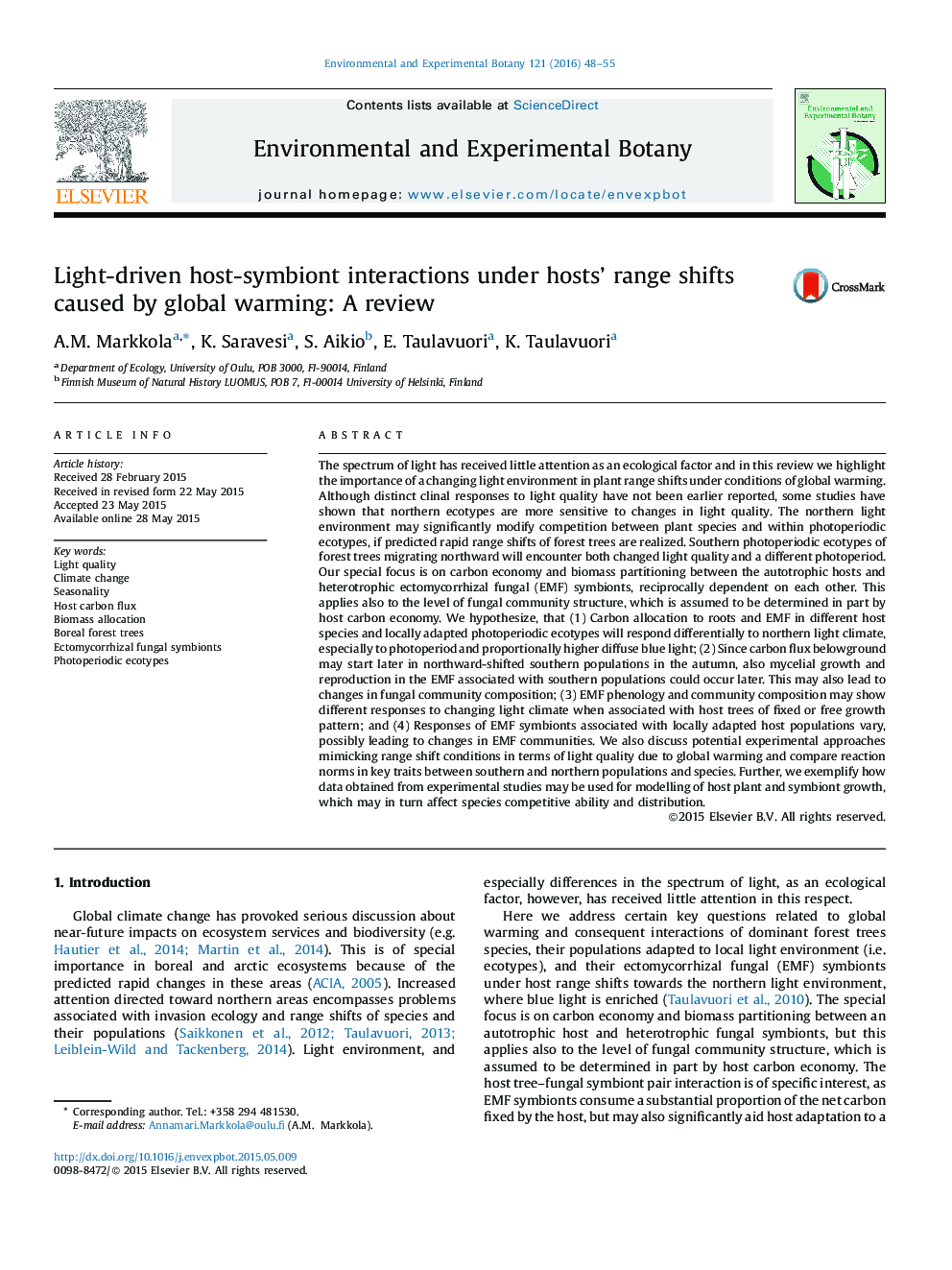| کد مقاله | کد نشریه | سال انتشار | مقاله انگلیسی | نسخه تمام متن |
|---|---|---|---|---|
| 4554105 | 1628056 | 2016 | 8 صفحه PDF | دانلود رایگان |

• Changes in light quality are neglected in plant range shifts under global warming.
• Northward migrating trees will encounter different light quality and photoperiod.
• In migrating trees timing of carbon allocation belowground may change.
• Under host range shifts also ectomycorrhizal symbiont communities may alter.
The spectrum of light has received little attention as an ecological factor and in this review we highlight the importance of a changing light environment in plant range shifts under conditions of global warming. Although distinct clinal responses to light quality have not been earlier reported, some studies have shown that northern ecotypes are more sensitive to changes in light quality. The northern light environment may significantly modify competition between plant species and within photoperiodic ecotypes, if predicted rapid range shifts of forest trees are realized. Southern photoperiodic ecotypes of forest trees migrating northward will encounter both changed light quality and a different photoperiod. Our special focus is on carbon economy and biomass partitioning between the autotrophic hosts and heterotrophic ectomycorrhizal fungal (EMF) symbionts, reciprocally dependent on each other. This applies also to the level of fungal community structure, which is assumed to be determined in part by host carbon economy. We hypothesize, that (1) Carbon allocation to roots and EMF in different host species and locally adapted photoperiodic ecotypes will respond differentially to northern light climate, especially to photoperiod and proportionally higher diffuse blue light; (2) Since carbon flux belowground may start later in northward-shifted southern populations in the autumn, also mycelial growth and reproduction in the EMF associated with southern populations could occur later. This may also lead to changes in fungal community composition; (3) EMF phenology and community composition may show different responses to changing light climate when associated with host trees of fixed or free growth pattern; and (4) Responses of EMF symbionts associated with locally adapted host populations vary, possibly leading to changes in EMF communities. We also discuss potential experimental approaches mimicking range shift conditions in terms of light quality due to global warming and compare reaction norms in key traits between southern and northern populations and species. Further, we exemplify how data obtained from experimental studies may be used for modelling of host plant and symbiont growth, which may in turn affect species competitive ability and distribution.
Journal: Environmental and Experimental Botany - Volume 121, January 2016, Pages 48–55